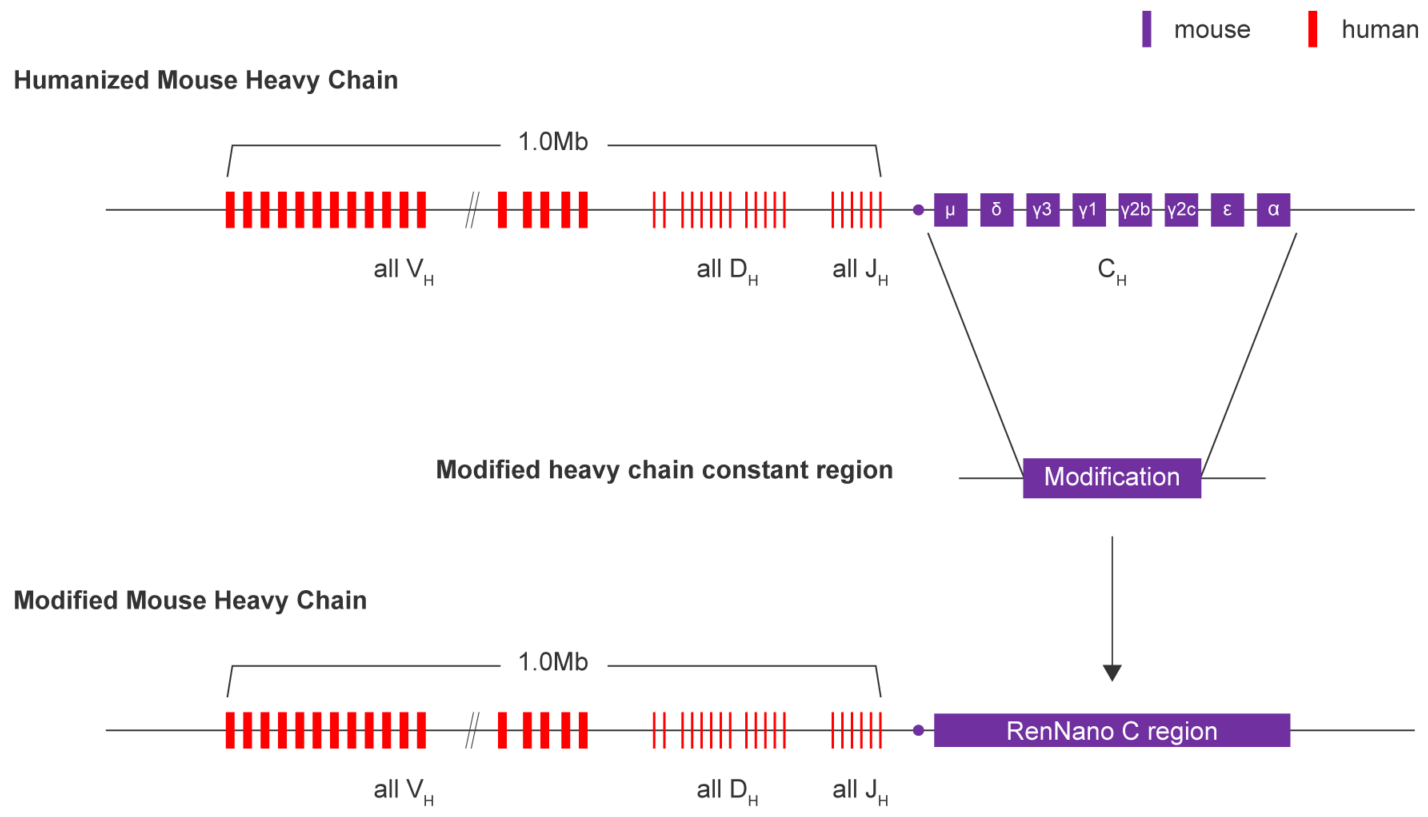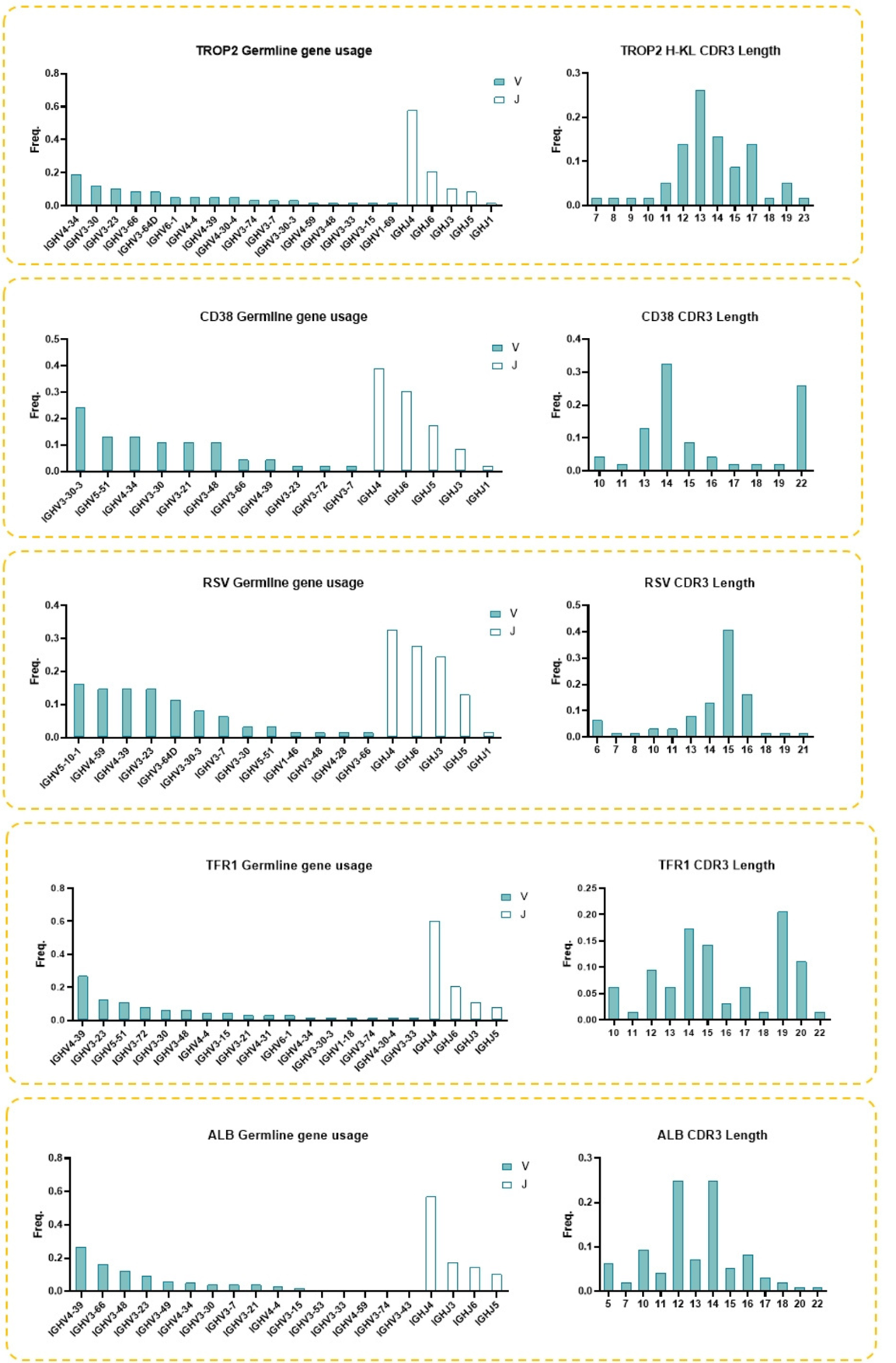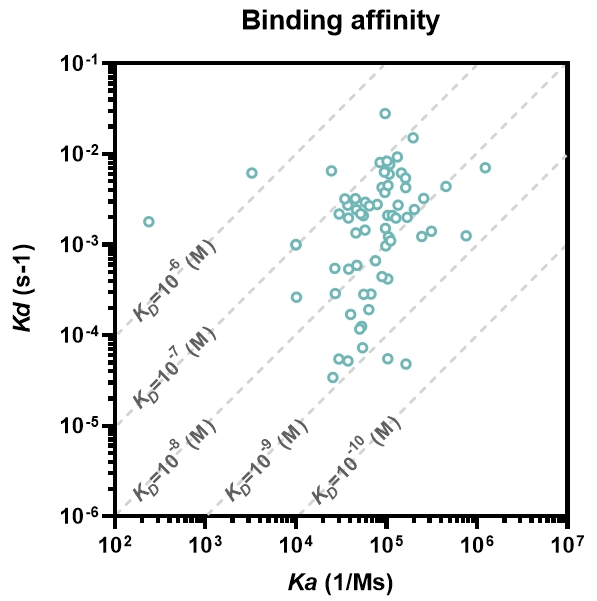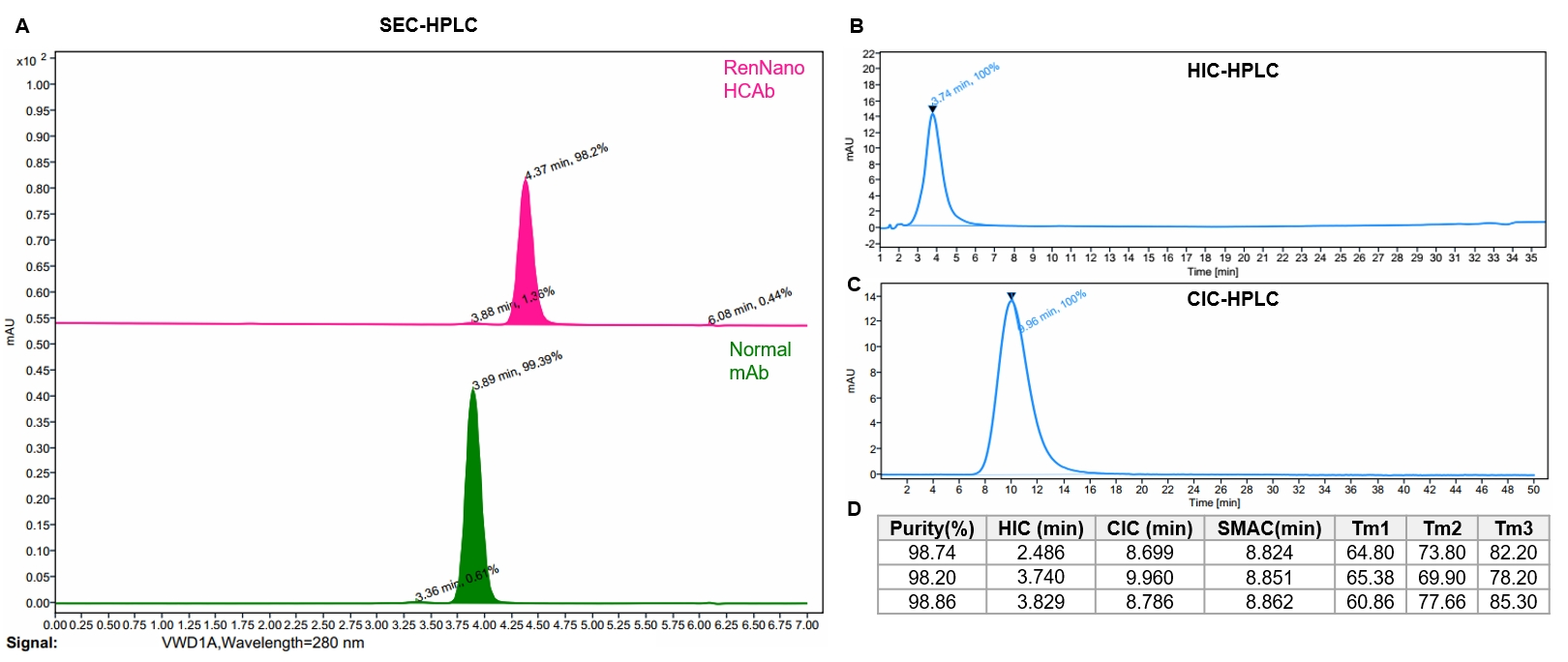

RenNano mice generate heavy chain-only antibodies (HCAbs) that do not require in vitro humanization, making the process faster and more cost-effective. RenNano-derived HCAbs demonstrate sequence diversity, optimal affinity and favorable PK properties.
on this page


RenNano mice' immune responses against TFR1, 4-1BB, and ALB. Sera from RenNano mice immunized with TFR-1 and 4-1BB (membrane antigens) were diluted and incubated with antigen-expressing CHO cells. Fluorochrome-conjugated secondary antibodies were used to label CHO-bound HCAbs, and mean fluorescence intensity (MFI) was measured using flow cytometry to indicate the antigen-specific HCAb titer. Sera from RenNano mice immunized with ALB (secreted antigen) were diluted and incubated with fluorochrome-conjugated secondary antibodies. OD450 was measured using ELISA to indicate the antigen-specific HCAb titer.

HCAbs derived from RenNano mice are diverse and many contain longer CDR3 regions. Antigen-specific HCAbs were analyzed by their heavy chain germline gene usage and CDR3 length. Analysis indicates broad IGHV germline diversity. Additionally, most CDR3 lengths observed were longer than 12 AA, with some longer than 17 AA.

The affinity of 68 purified RenNano HCAbs for 8 targets (4-1BB, TROP2, IL3RA, OX40, Nectin-4, ROR1, PSMA and DLL3) were tested by SPR. For most HCAbs, KD were between 10-6 ~ 10-10 M.

B cell development and differentiation patterns in RenNano mice. RenNano mice have comparable B cell proportions in peripheral lymphoid organs (spleen, SP and lymph nodes, LN) to WT mice or RenMab mice. Spleens from RenNano mice also have comparable percentages of follicular B (FO-B) cells and marginal zone B (MZ-B) cells to WT mice or RenMab mice.

RenNano HCAbs' physiochemical property analysis. RenNano HCAbs show high purity after one-step purification (A). HCAbs exhibit short retention time in HIC-HPLC and CIC-HPLC, indicating superb hydrophilicity and specificity (B, C). RenNano HCAbs also exhibit favorable thermostability (D).